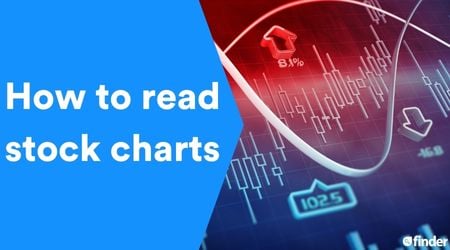 Warning: Short squeezes are risky for all involved. Being a squeezer is not necessarily as risky as short selling, but still riskier than traditional “buy and hold” investing. In the ideal conditions for a short seller, there’s huge volatility and uncertainty about the stock in question.
Warning: Short squeezes are risky for all involved. Being a squeezer is not necessarily as risky as short selling, but still riskier than traditional “buy and hold” investing. In the ideal conditions for a short seller, there’s huge volatility and uncertainty about the stock in question.When a stock price that was previously on a downward trend starts to rise, investors who were betting on the downward trend (or “short selling” the stocks) will scramble to buy the stocks back to prevent or mitigate their losses. This can lead “short squeezers” to jump in and try to make a gain. Find out more about short squeezes, how they work and the risks involved.
 Warning: Short squeezes are risky for all involved. Being a squeezer is not necessarily as risky as short selling, but still riskier than traditional “buy and hold” investing. In the ideal conditions for a short seller, there’s huge volatility and uncertainty about the stock in question.
Warning: Short squeezes are risky for all involved. Being a squeezer is not necessarily as risky as short selling, but still riskier than traditional “buy and hold” investing. In the ideal conditions for a short seller, there’s huge volatility and uncertainty about the stock in question.What is short selling?
The term “shorting a stock” means betting that the price of a stock will fall. We explain more in our short selling guide, but in essence, you borrow the stocks from a broker and sell them. You now owe your broker as many stocks as you borrowed, so to make money you need the price of the stocks to fall so you can buy them back at a reduced price.
The issue is, that the value of those stocks might rise. If they do, then you need to spend more money on them to buy them back than you initially sold them for, which means you make a loss. As the stock value could potentially rise infinitely, you could find yourself losing a lot more money than you originally invested.
When prices rise, a short seller usually cuts their losses and buys the stock for the increased price. However, it can be difficult to do, as everyone else who shorted that stock is also trying to buy back their stocks.
In the period between choosing to buy and actually buying, that stock could have risen a great deal more. The “panic buying” then pushes the price of the stock higher. The broker gets a fee from the short seller whether the price rises or falls.
What is a short squeeze
It’s at this point that a short squeezer will buy the stock while it’s rising and short sellers are still trying to buy. But they will need to sell at the stock’s peak, before it falls again.
Short squeeze explained simply
In simple terms, a short squeeze is when shorters (people who are shorting a stock) are “squeezed” out of their positions because of a rapid rise in the stocks they are shorting.
Sometimes, daredevil investors use this as an opportunity to make money by buying stocks while shorters scramble to buy back stocks and sell at the peak.
It’s risky because the stocks could fall as rapidly as they rose and they may not be able to sell the stocks before they fall again.
GameStop short squeeze
Beginning with GameStop (GME), a group of retail investors on Reddit intended to drive up the price of stocks that were being heavily shorted by hedge fund managers in January 2021. This led to a significant rise in the stock price and a number of short sellers making substantial losses. These price movements led to stock volatility and trading platform outages.
The price movements weren’t as a result of company news or any fundamental financial factors, which are a more sound basis for making investment decisions.
Volkswagen short squeeze
In 2008 there was a short squeeze on Volkswagen. In already uncertain times, a lot of investors were shorting Volkswagen stocks, but it very briefly surged, when Volkswagen reported several quarters of earnings that came out better than it expected. For several months after, the stock saw a fair bit of volatility on a generally downward trend.
How to predict a short squeeze
This is usually done with some advanced charting that more complex and professional trading platforms offer. You’ll need to make use of moving average tools such as Bollinger Bands to find out whether the stock price is above or below the moving average. You can also calculate the short interest percentage and the short interest ratio. Your trading provider should have all the information you need for these.
Moving averages
Daily moving averages can give you an idea of how the stock has traded in the last few months more smoothly than by looking at the price movements alone. You can use simple moving averages (SMA) to compare short term moving averages (20 to 50 days) with longer term moving averages (200 or so days).
Short interest percentage
This is basically just a percentage of how many of a stock’s shares are shorted. It’s calculated by dividing the number of shorted shares by the number of outstanding shares.
So, if a company has 500,000 stocks outstanding and 50,000 of them are being shorted then the short interest percentage is 10%. The higher the percentage, the more short sellers there are for that stock. This means that there will be more short sellers battling to sell their shares if the price starts to rise.
Short interest ratio
The short interest ratio is the number of shares that are currently being shorted divided by the stock’s average daily trading volume, which is the average number of shares that are traded each day in that stock.
It gives an estimate of how long it might take for short sellers to be able to buy back their shares if they were to rise in price. The higher the short interest ratio the more likely it is that short sellers will panic and a short squeezer can take advantage.
What happens after a short squeeze?
After a short squeeze there tends to be a period of volatility, potentially for several months.
Bottom line
It can be tempting to give a short squeeze a go, but it can be really high risk, and you need to make sure that you sell the stocks you’ve bought before they start to fall again. It could be worth giving it a go with a free practice trading account, such as with Questrade and Scotia iTRADE.
Once you think you’ve got your head around it and want to try it with real money, start small and make sure you understand the risks beforehand.
Compare trading platforms to buy and sell stocks
Finder Score for stock trading platforms
To make comparing even easier we came up with the Finder Score. Trading costs, account fees and features across 10+ stock trading platforms and apps are all weighted and scaled to produce a score out of 10. The higher the score, the better the platform—it's that simple.
More guides on Finder
-
7 oil tanker stocks to watch
Want to invest in oil tanker companies? We’ve put together a list of oil tanker stocks you should keep your eye on.
-
4 diamond stocks to watch
Want to invest in diamond companies? We’ve put together a list of diamond stocks you should keep your eye on.
-
8 sports stocks to watch
Want to invest in sports companies? We’ve put together a list of sports stocks you should keep your eye on.
-
What is a stop-loss order?
Learn how a stop-loss order can help you limit losses or lock in profits when trading.
-
Best renewable energy stocks
These are the best renewable energy stocks to buy now in Canada.
-
10 gold stocks to watch
Check out some of the best gold stocks to buy right now in Canada based on company performance.
-
Best stocks to buy right now in Canada
Finder’s unique algorithm found the 20 best TSX stocks to buy right now.
-
Guide to 10 of the best ETFs in Canada
Learn how to choose the best ETFs to buy right now in Canada.
-
What is micro-investing?
Round up your spare change into big bucks with Canadian apps designed for saving, depositing and investing.
-
Best investment accounts in Canada
Compare defensive and growth investments to find the best investment accounts in Canada for you.






